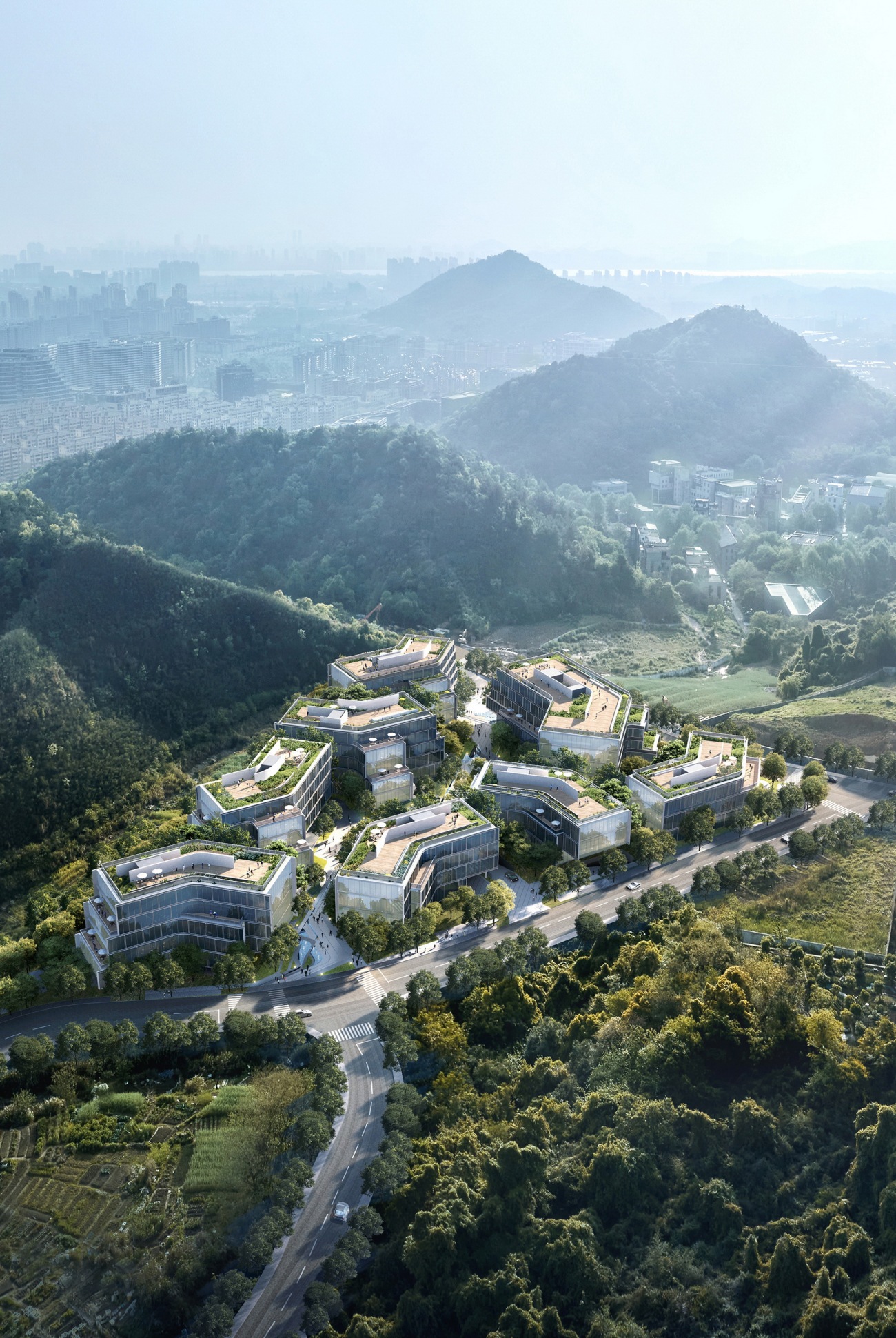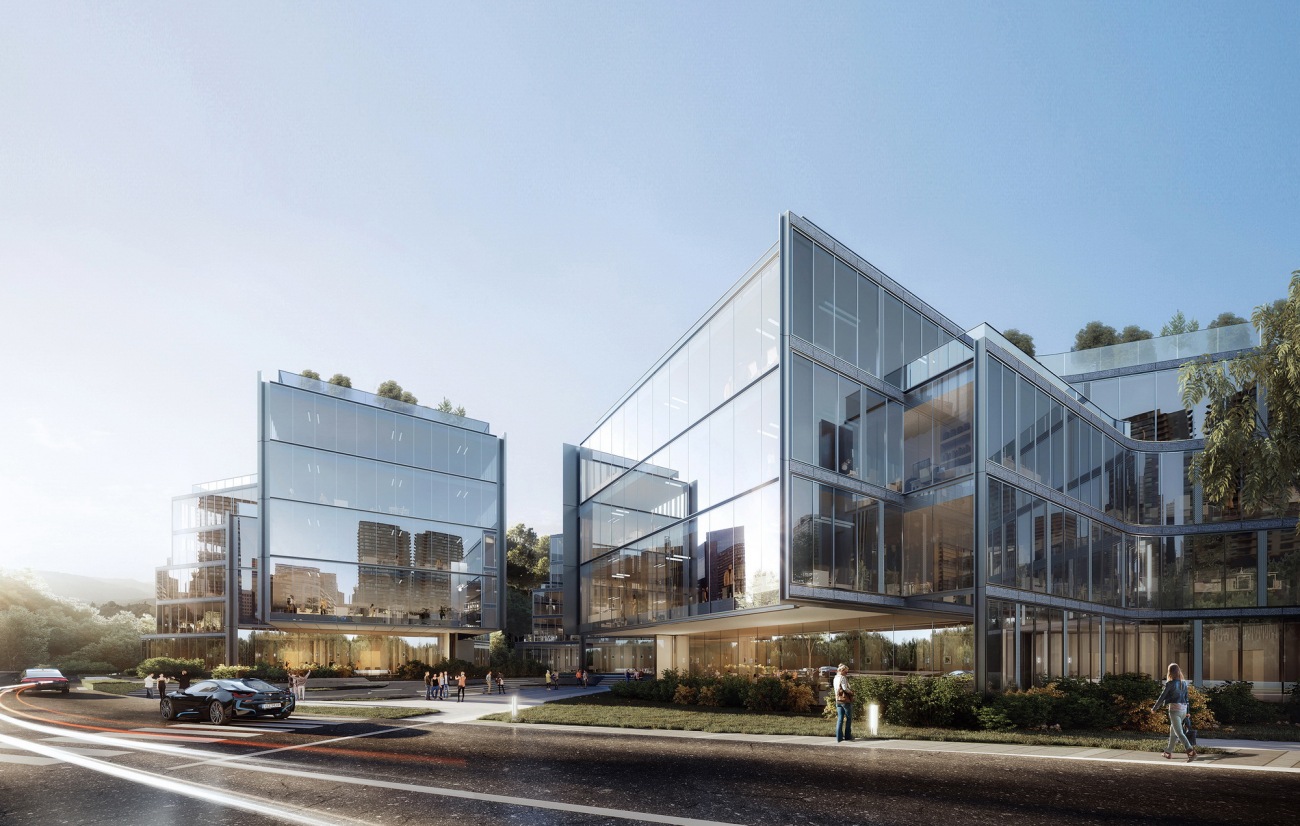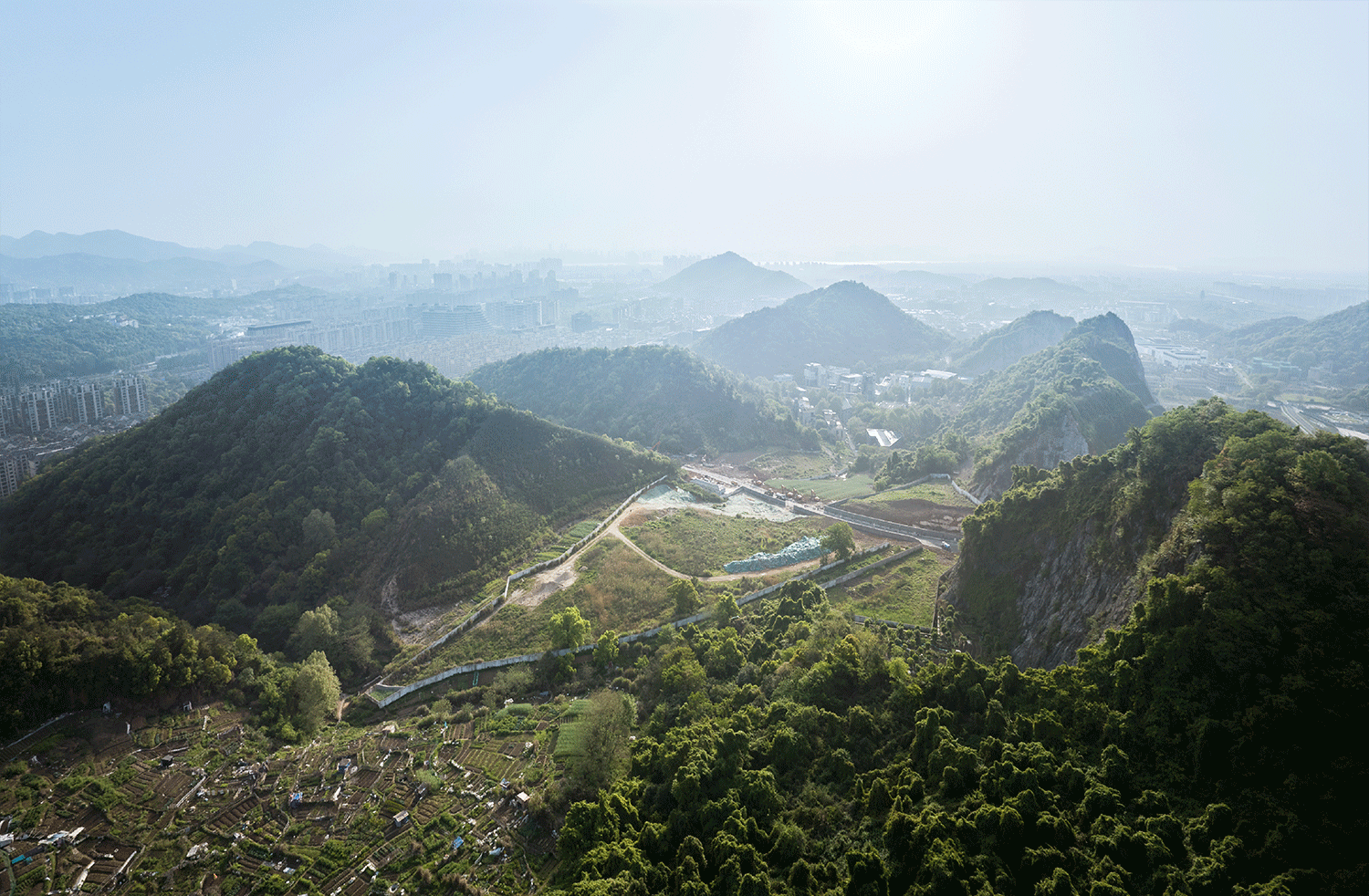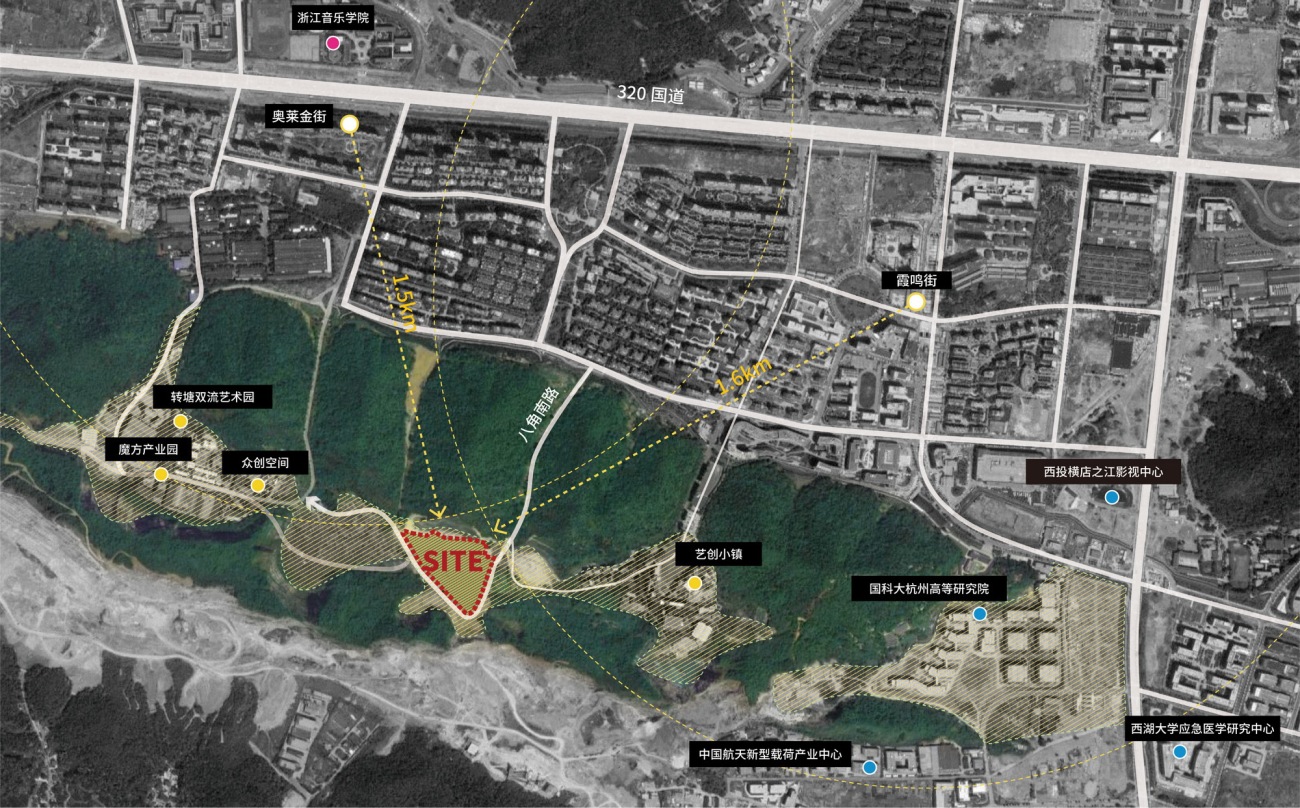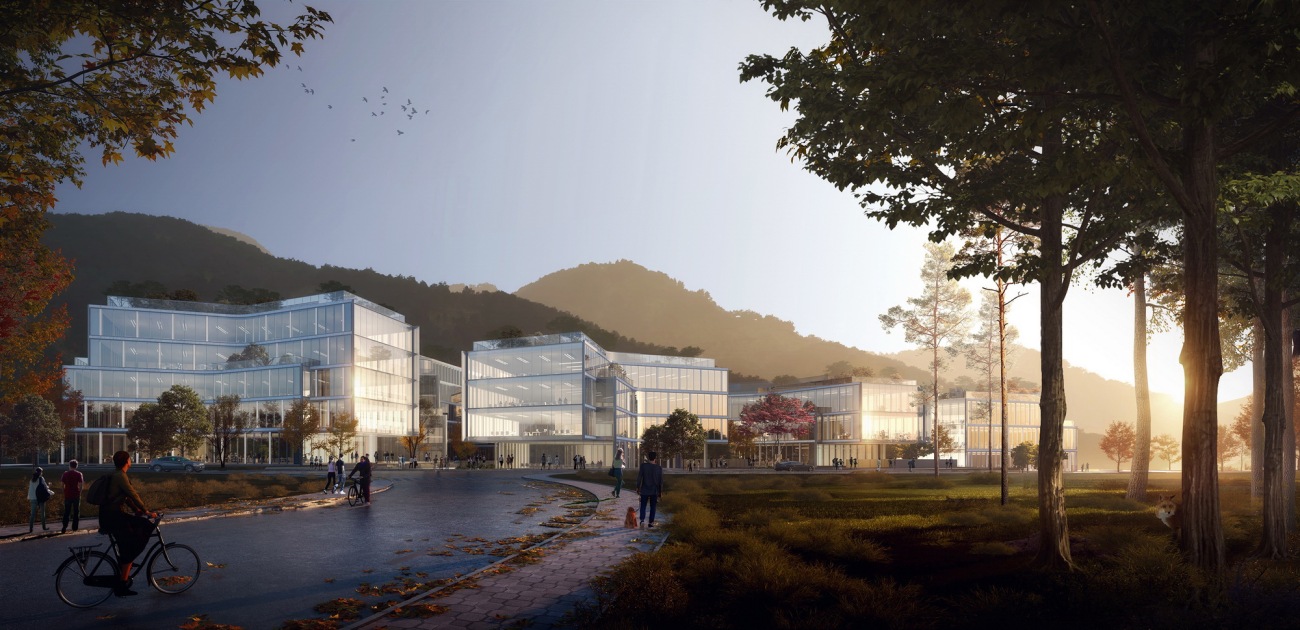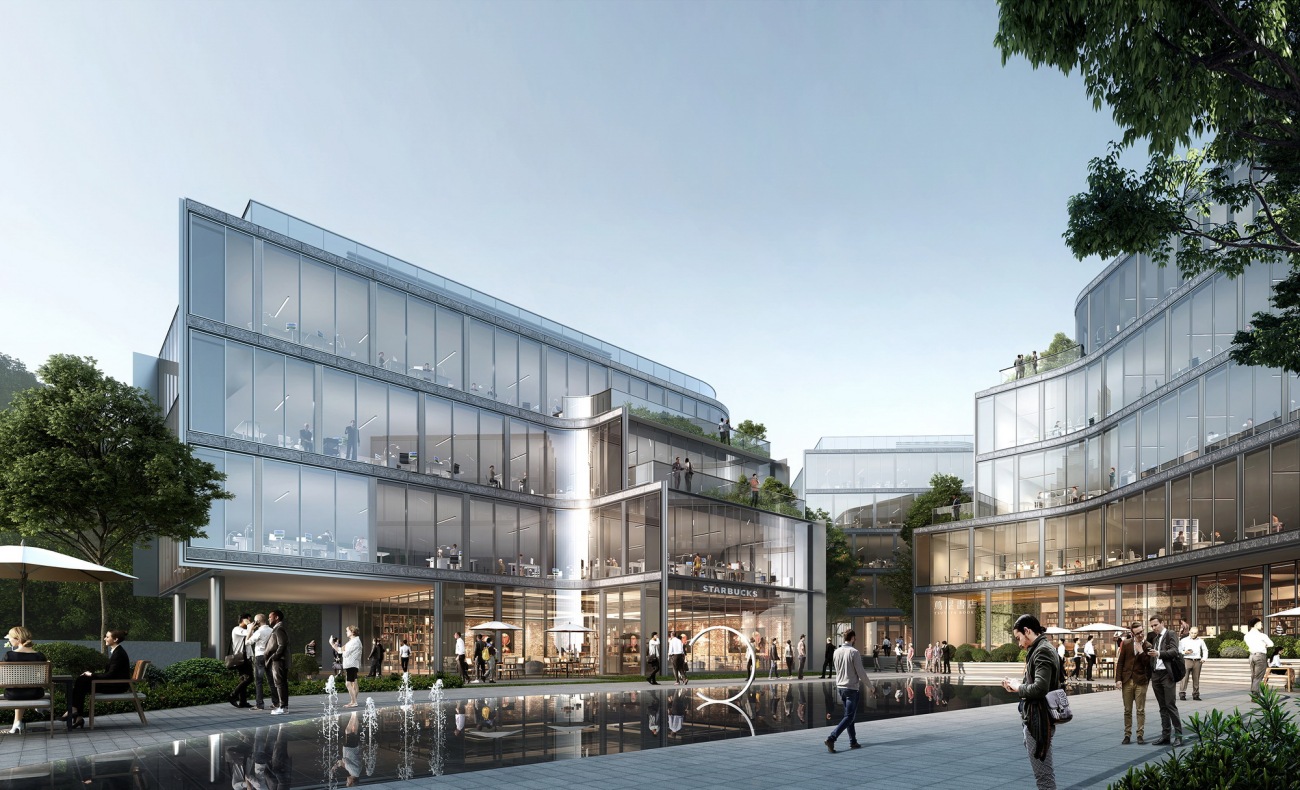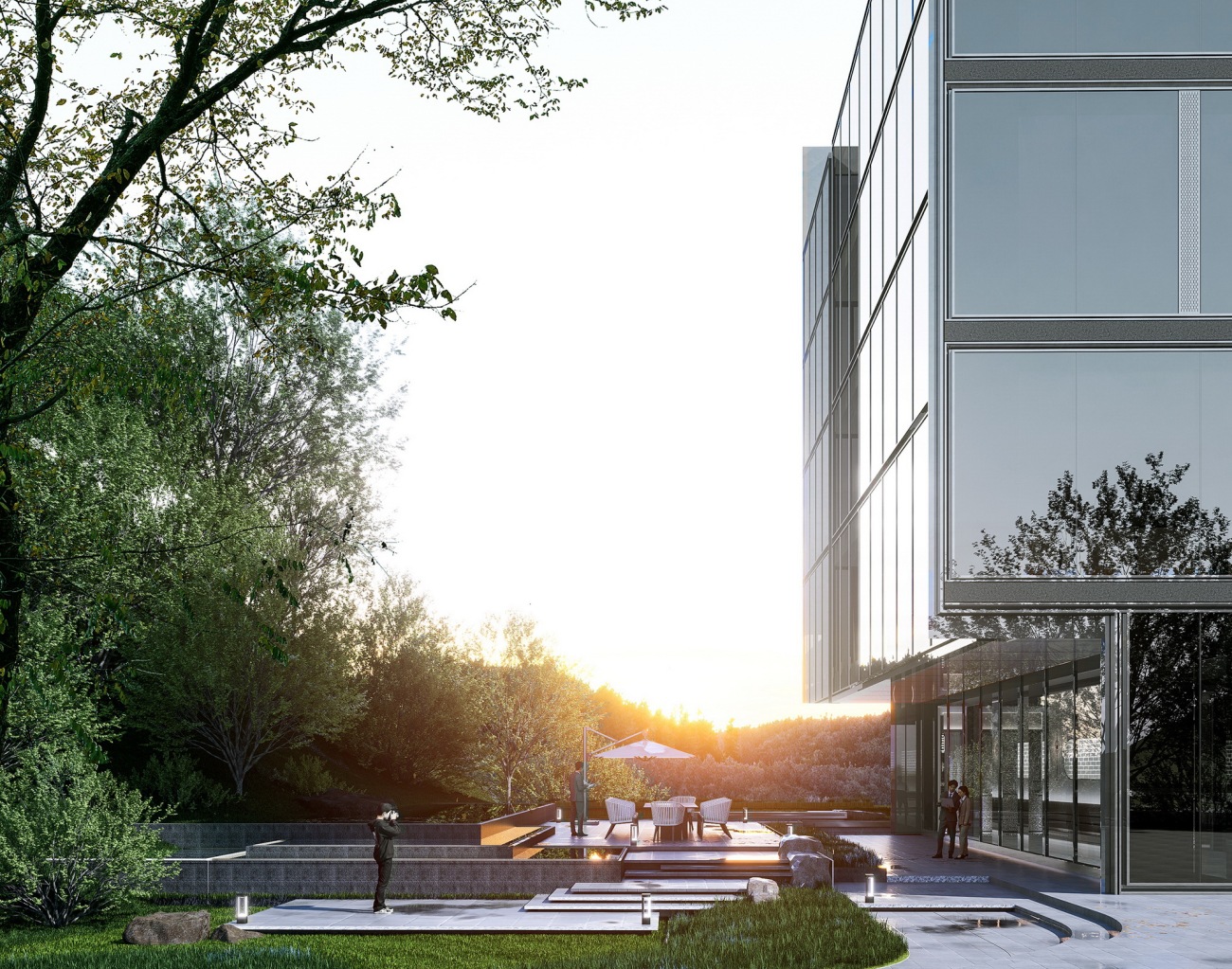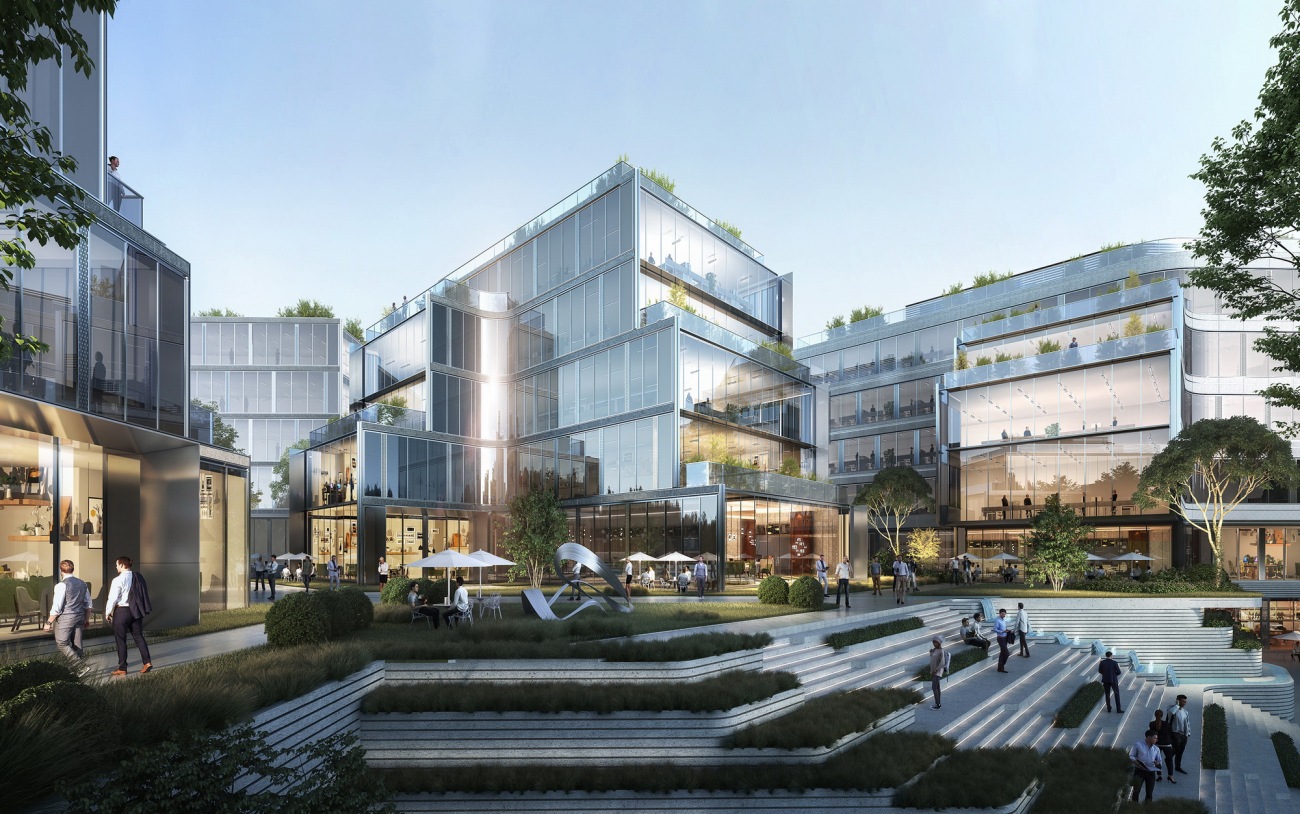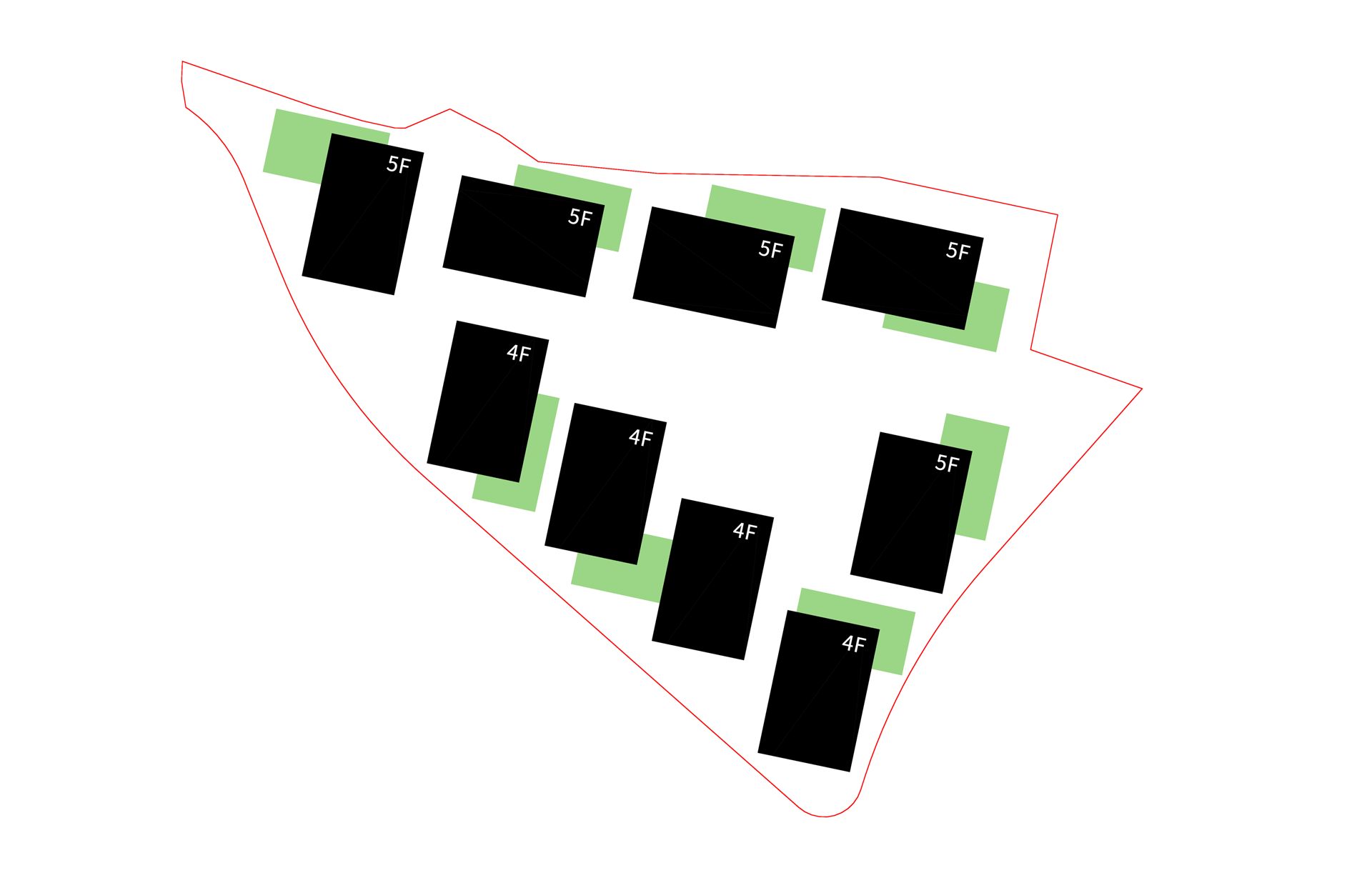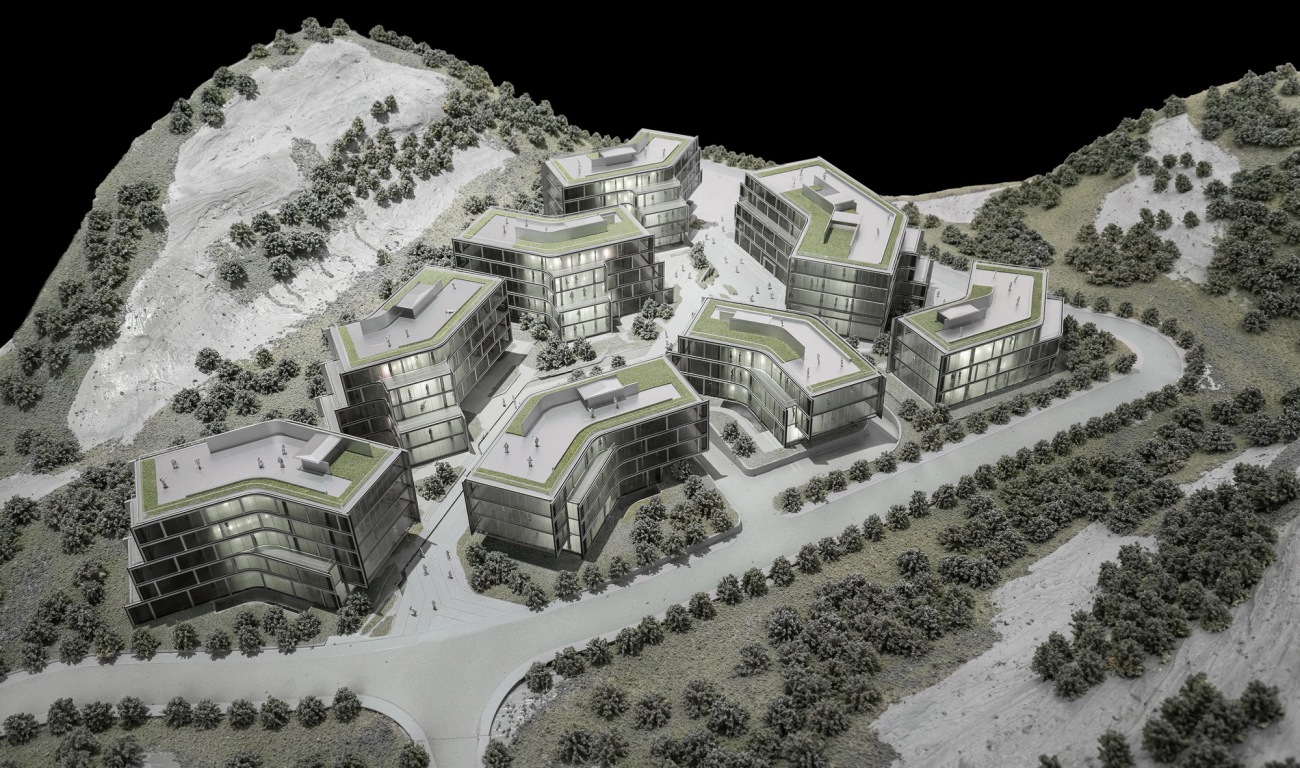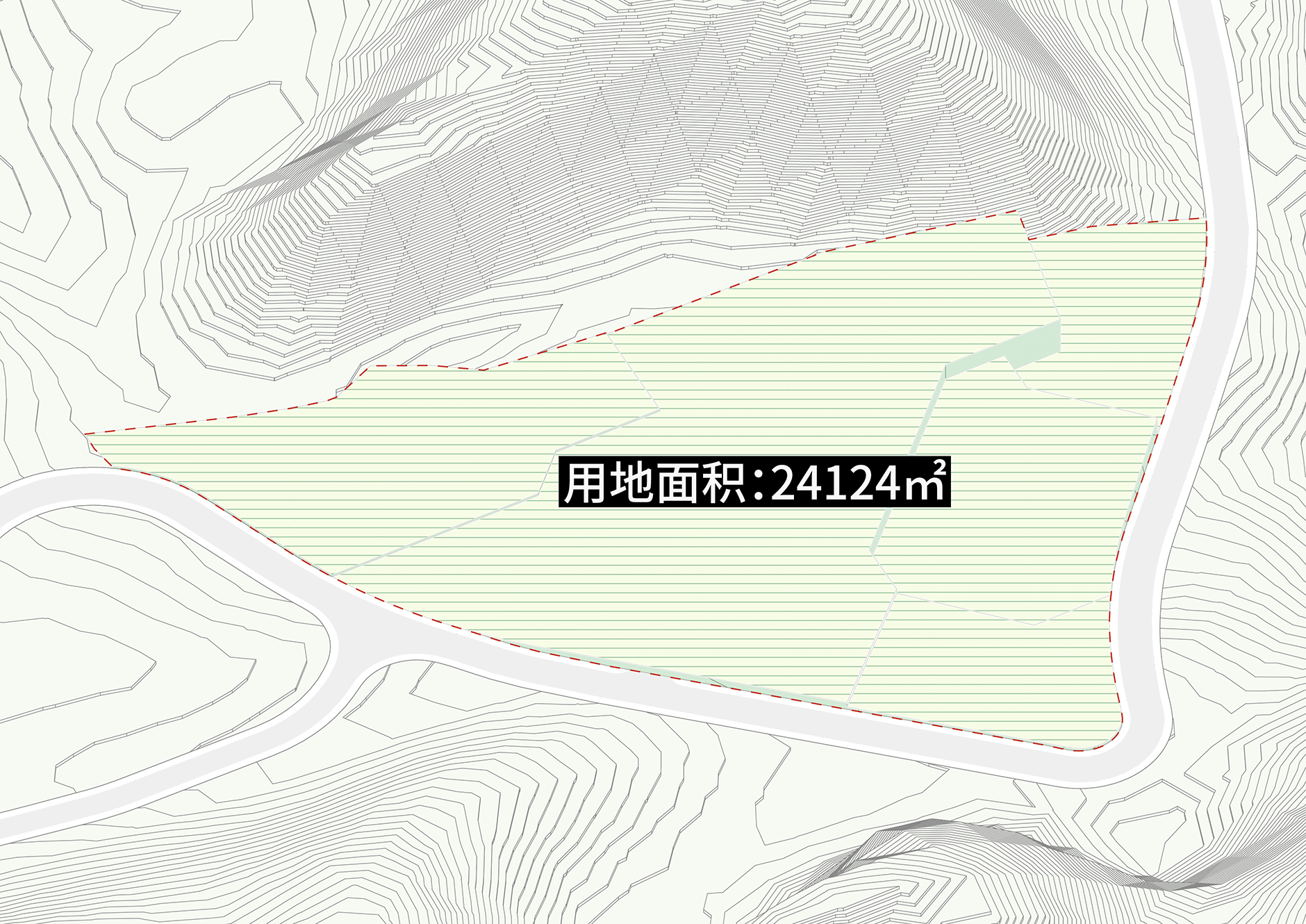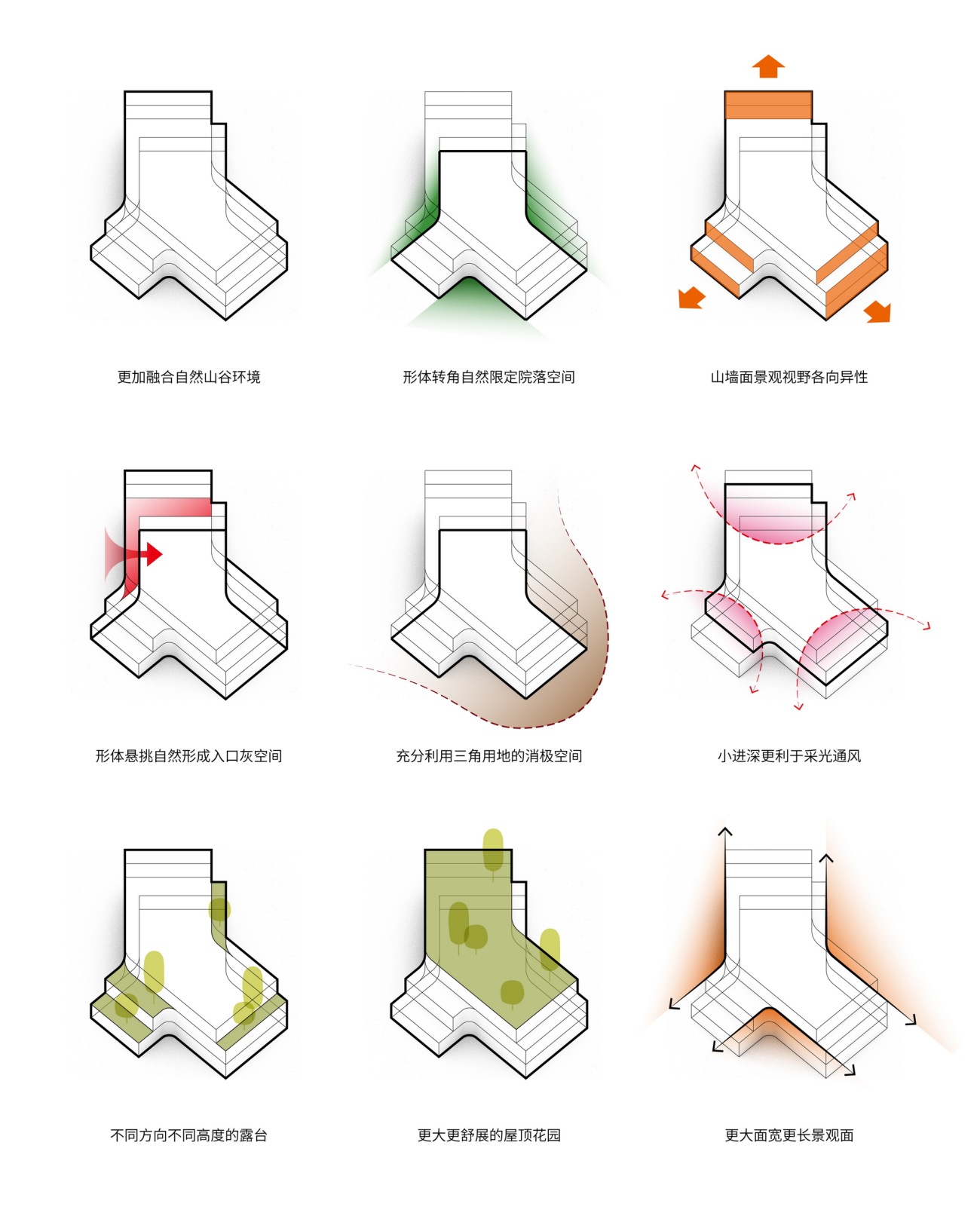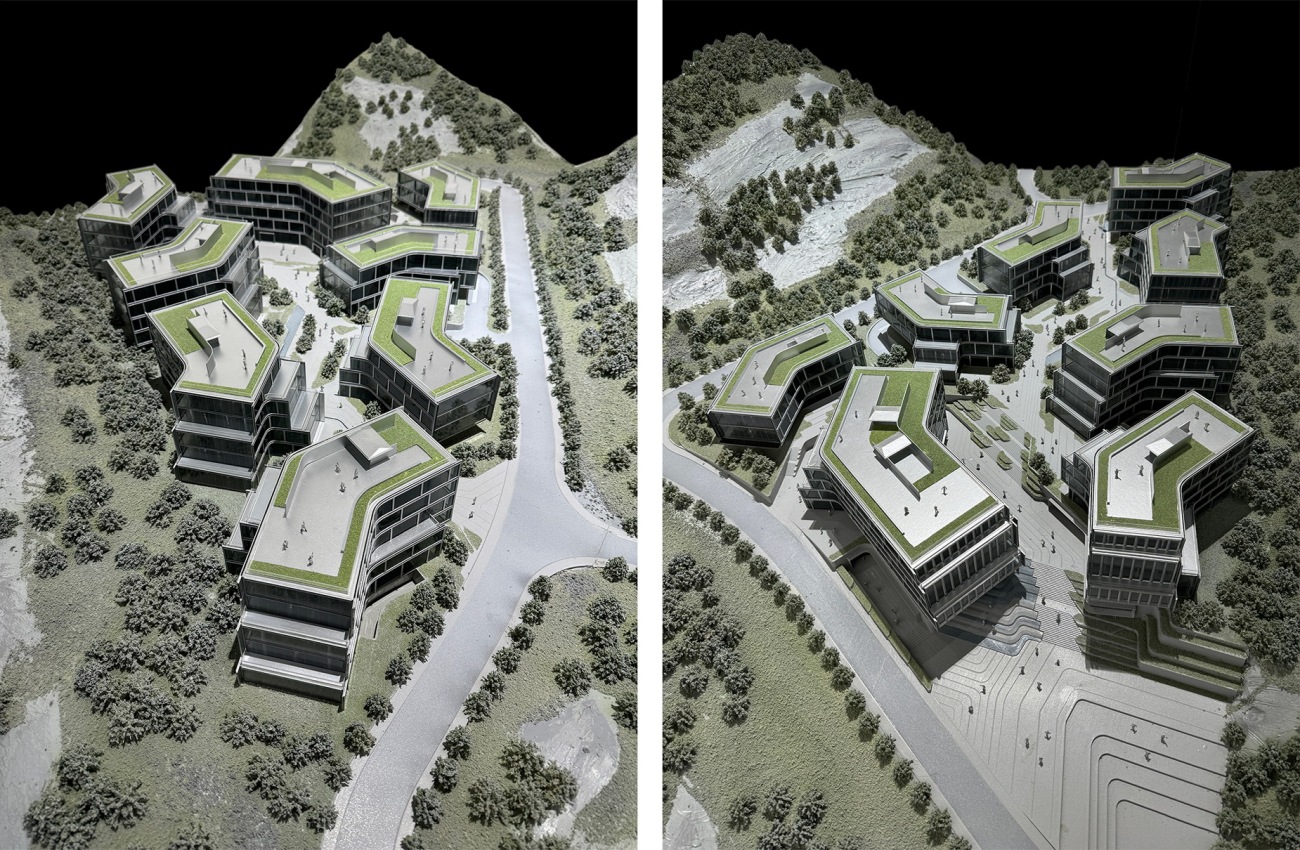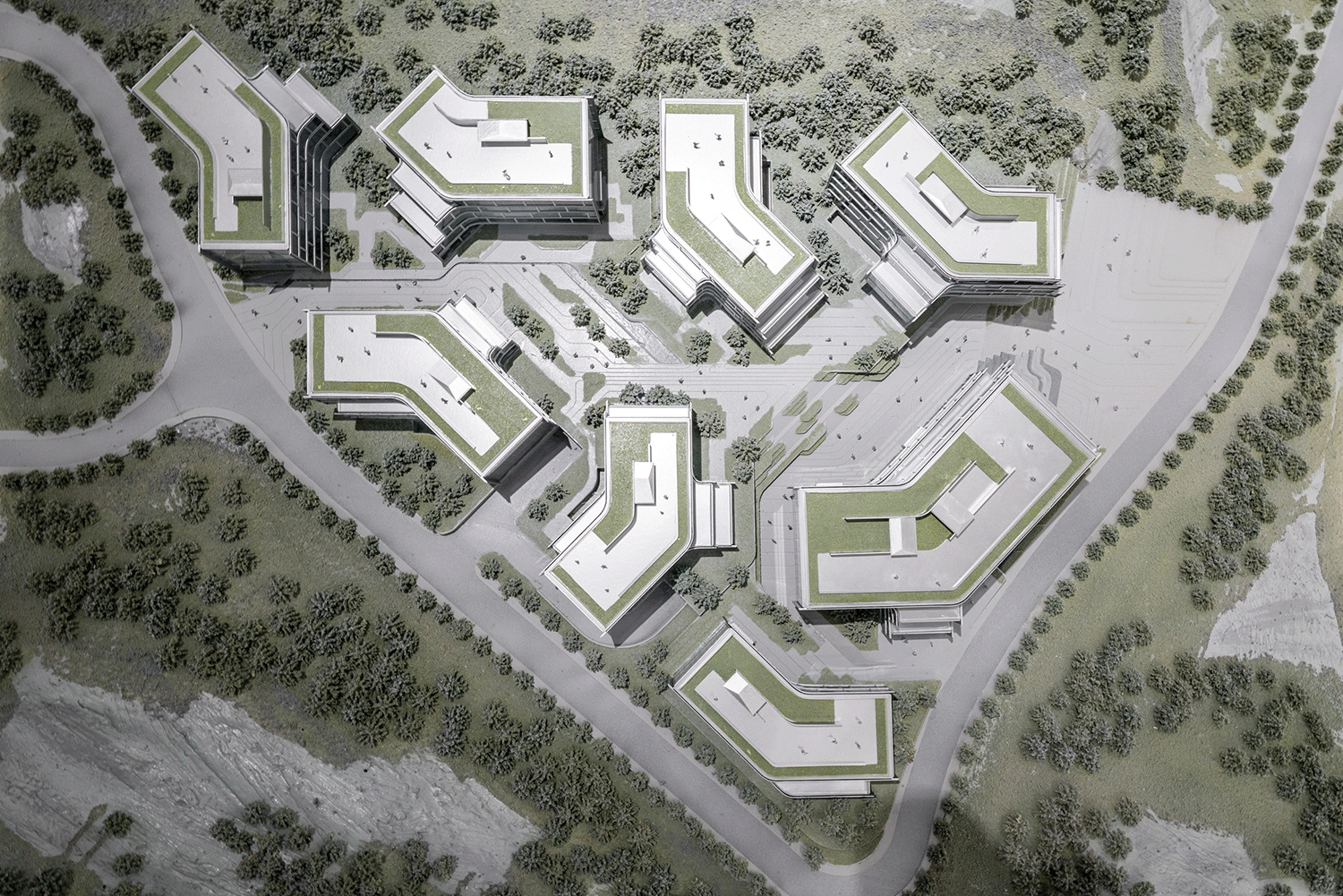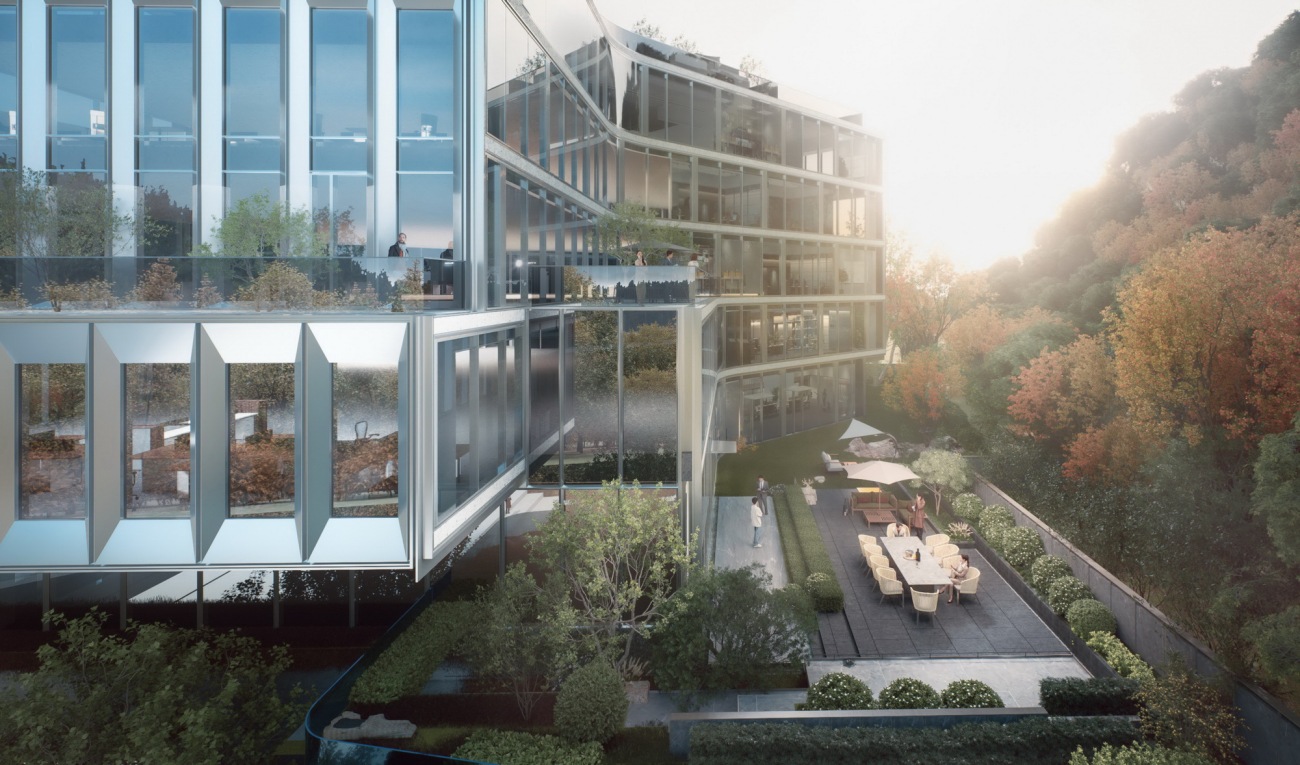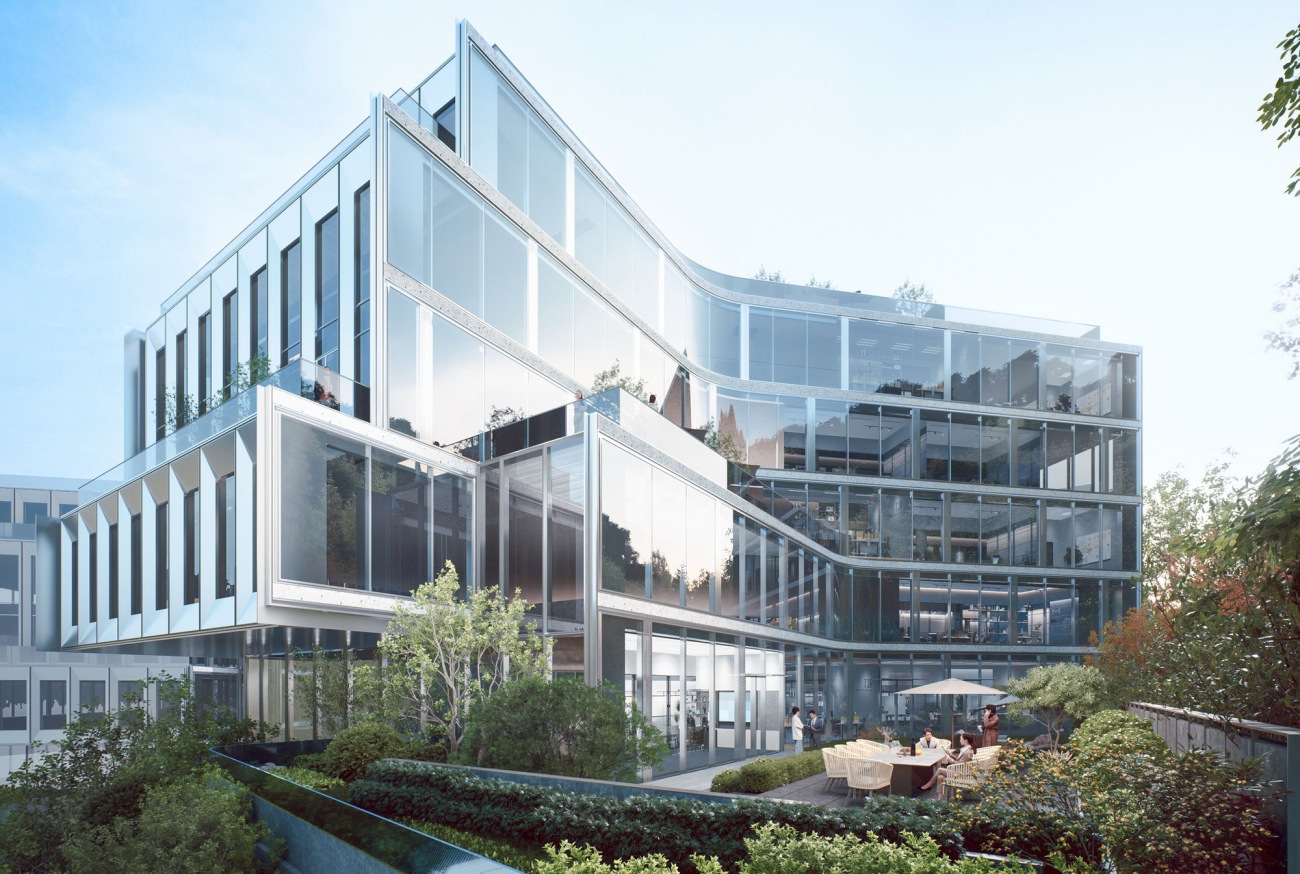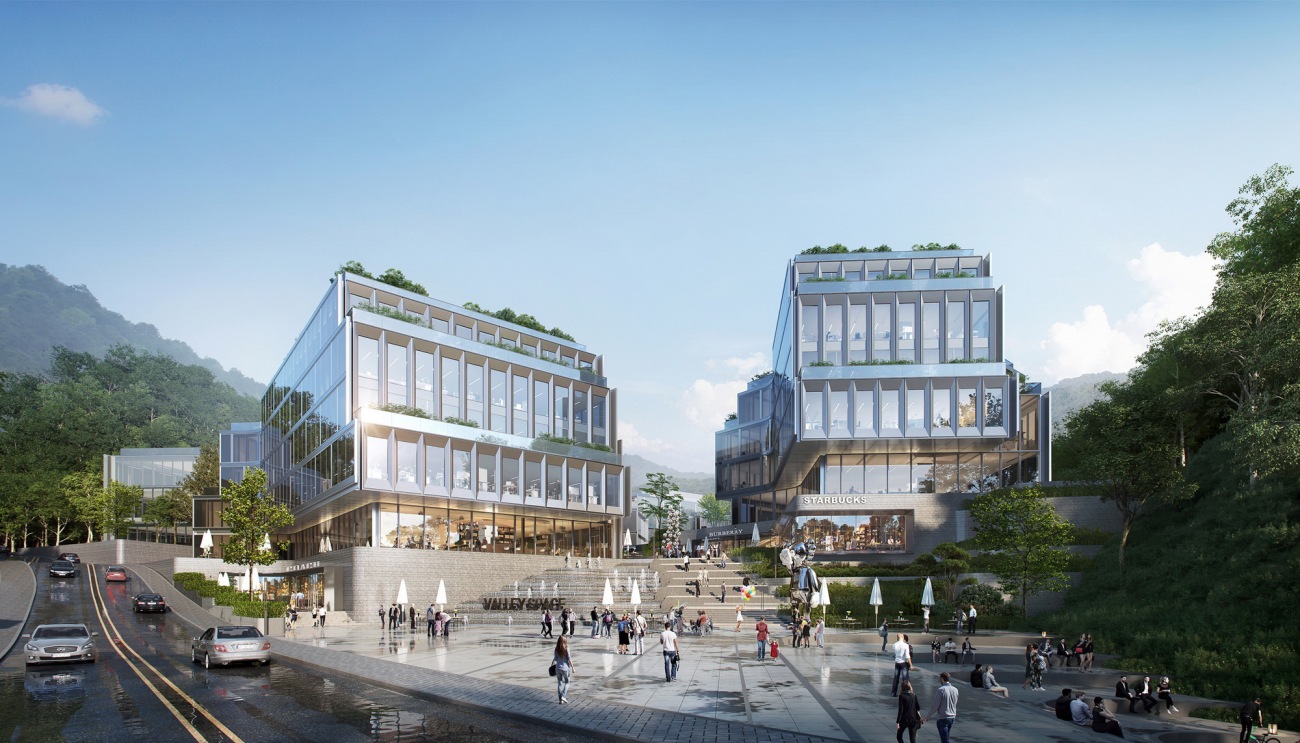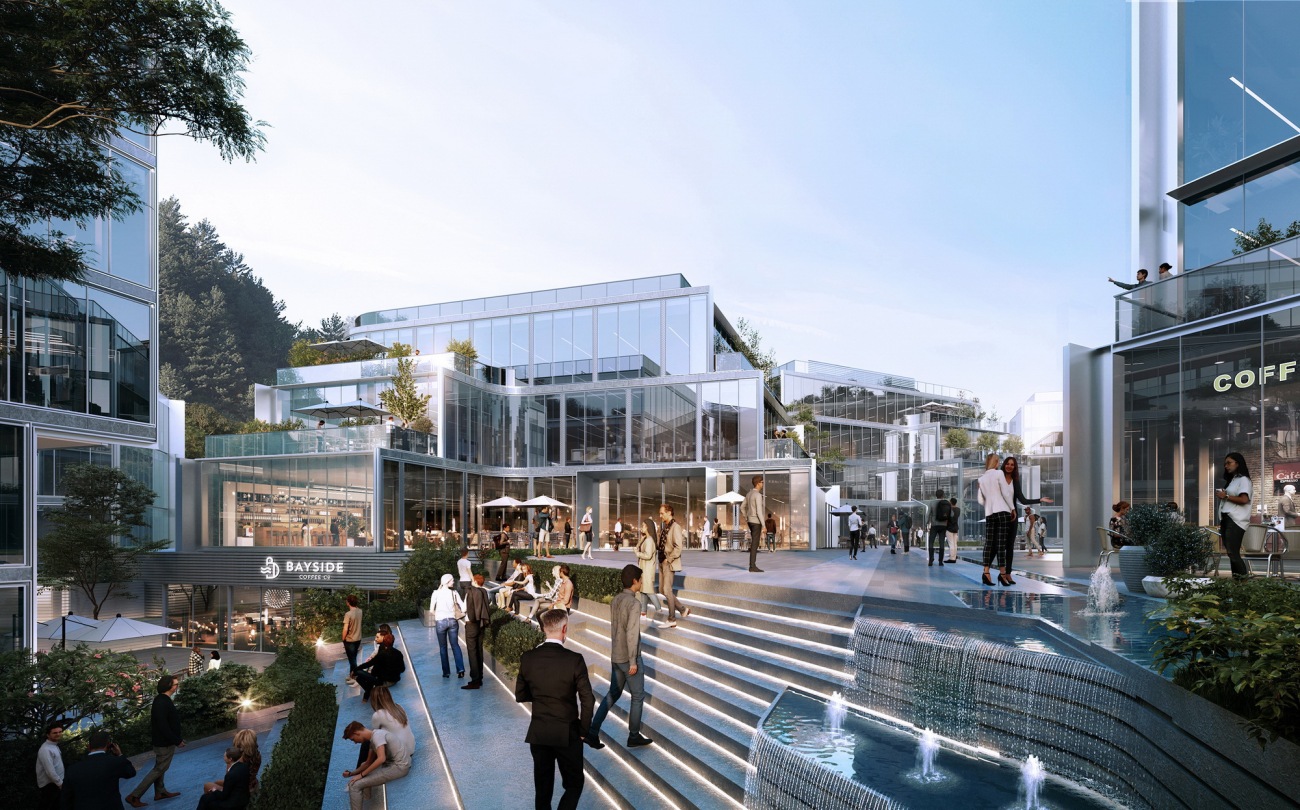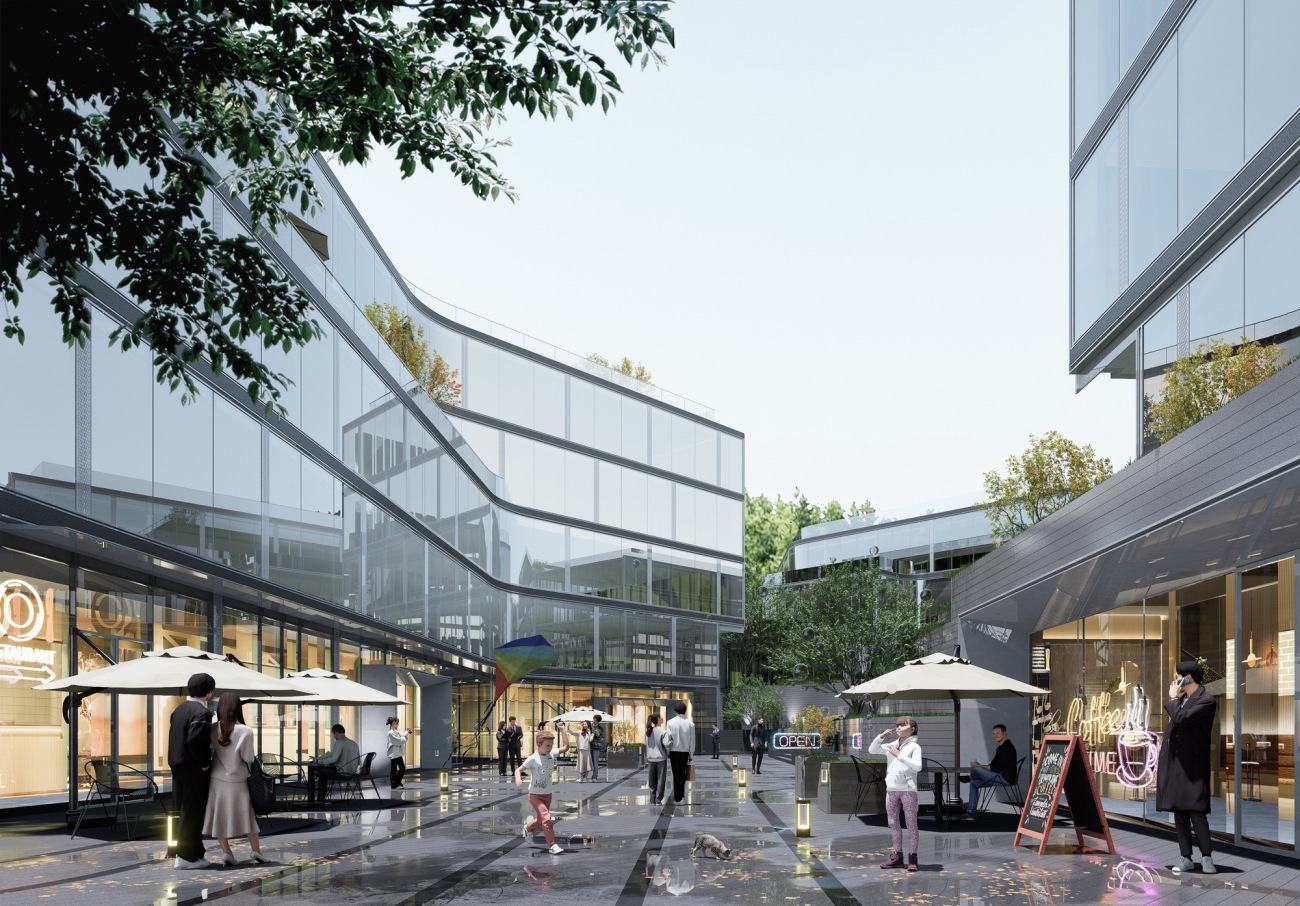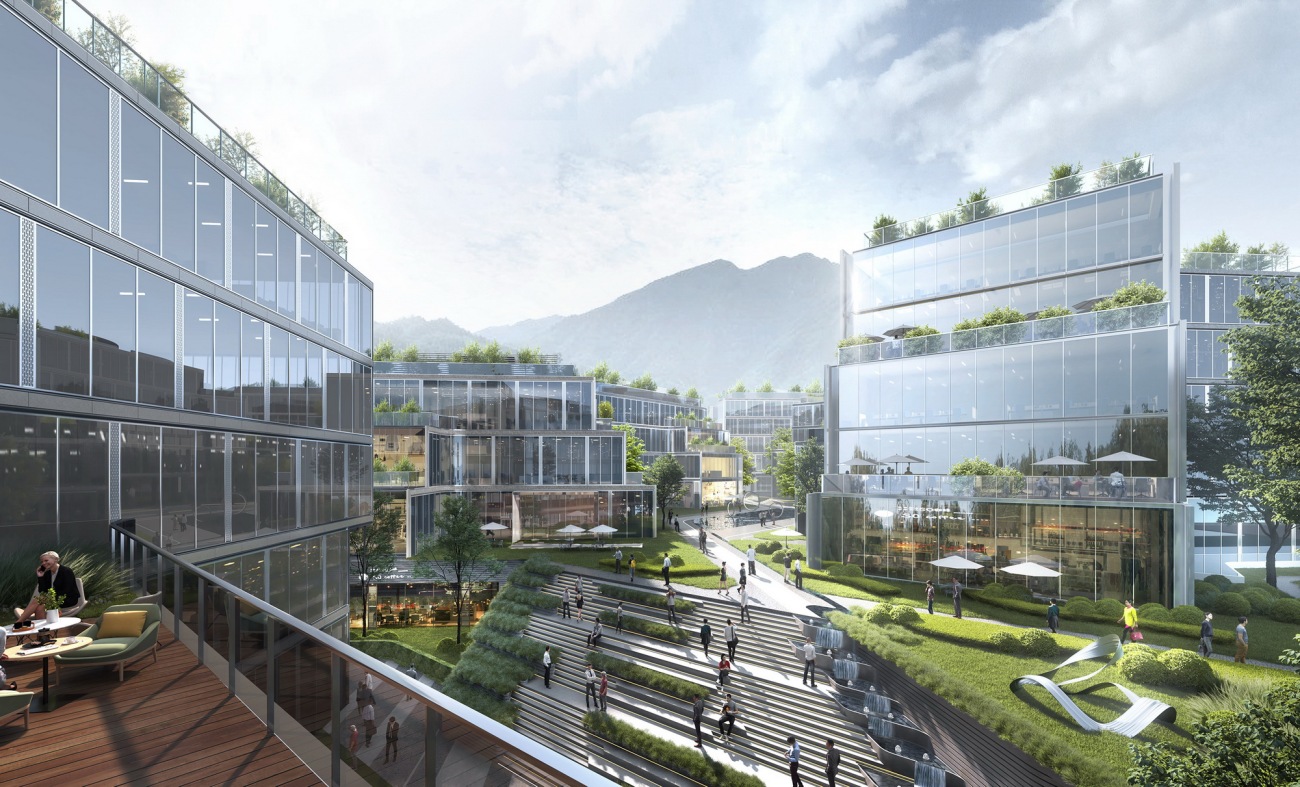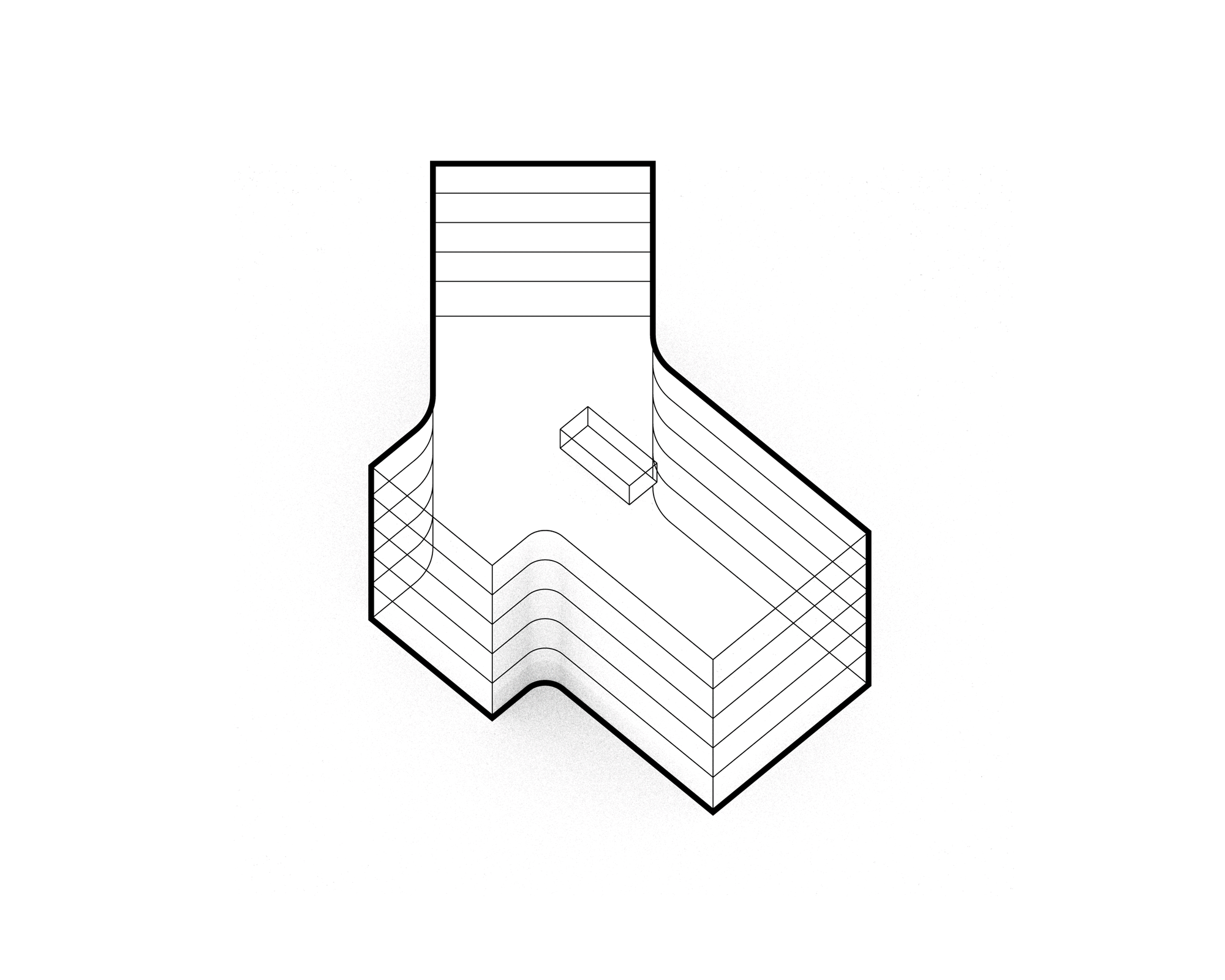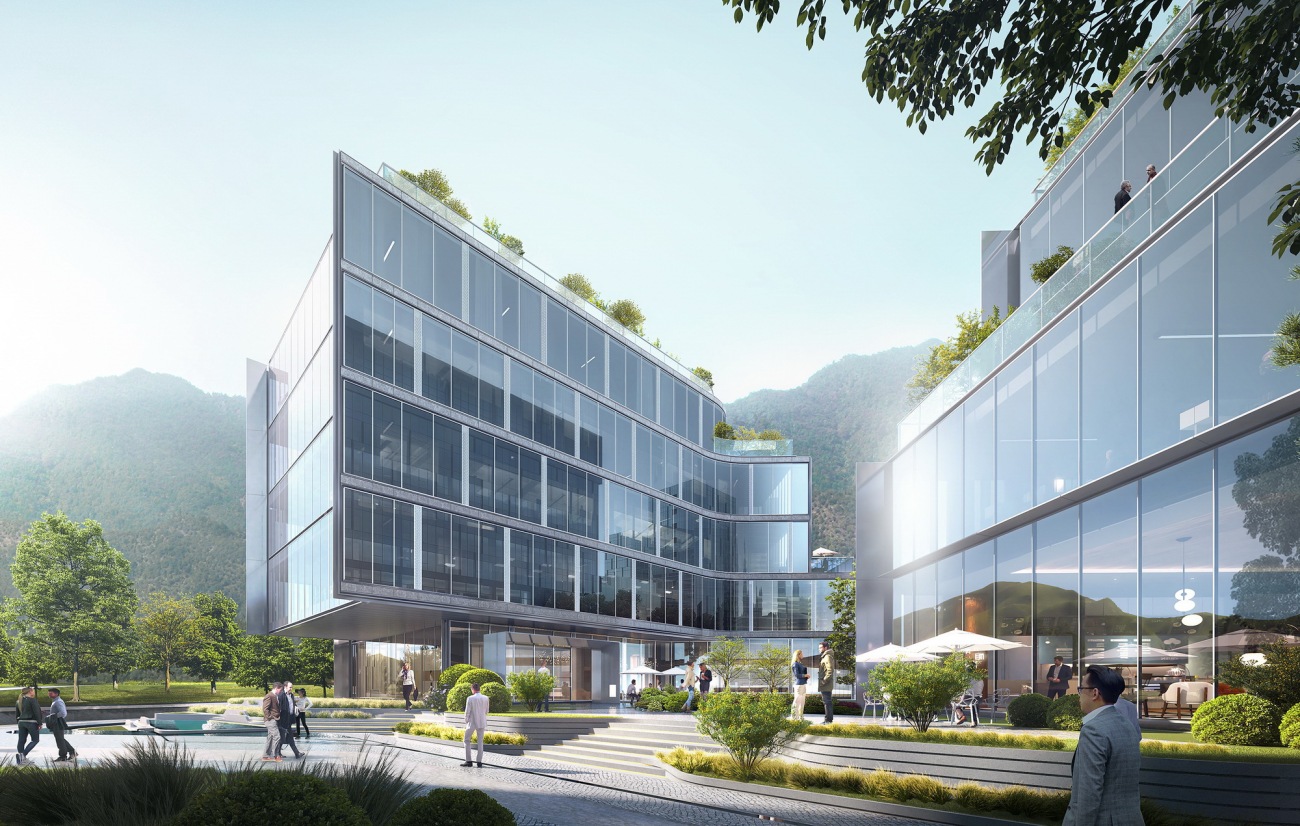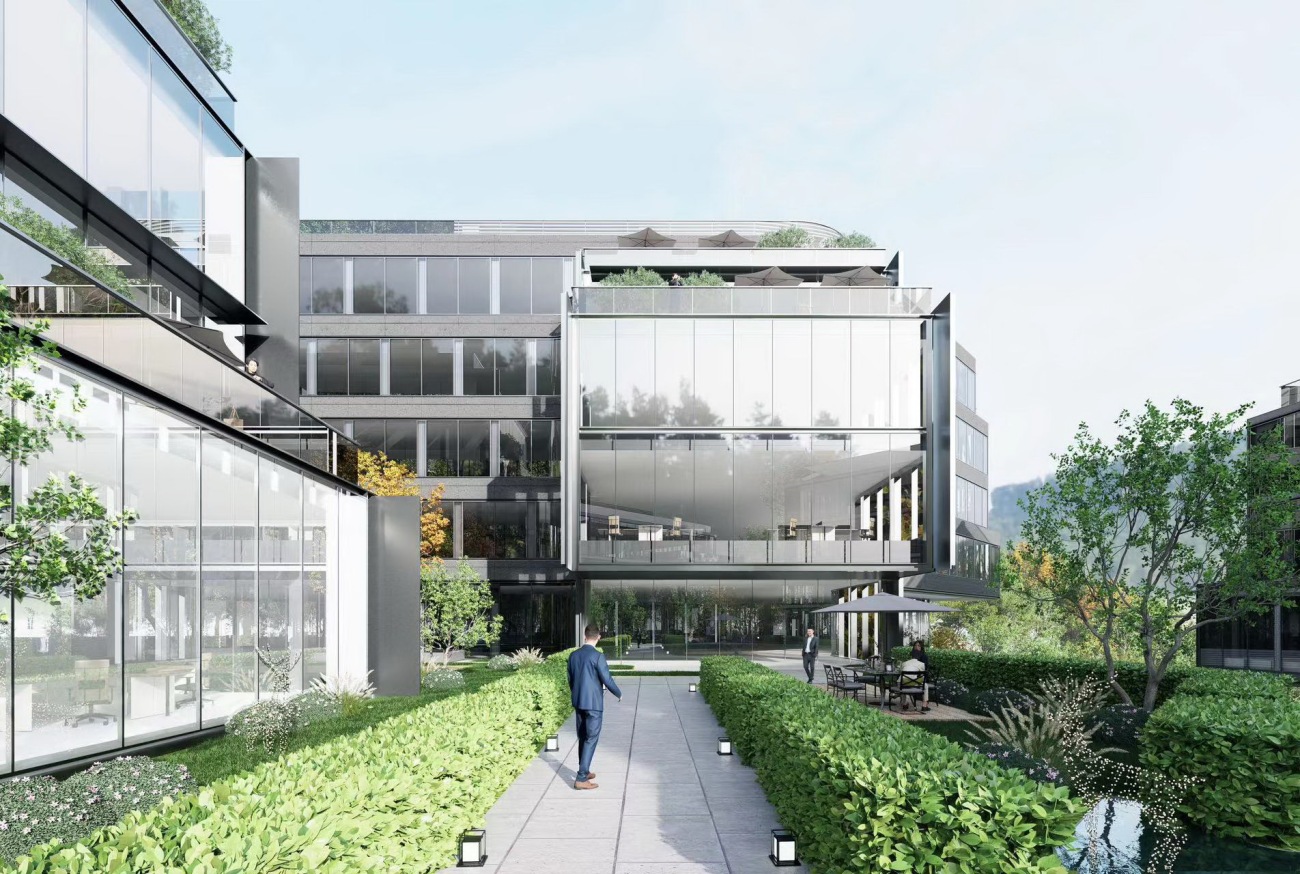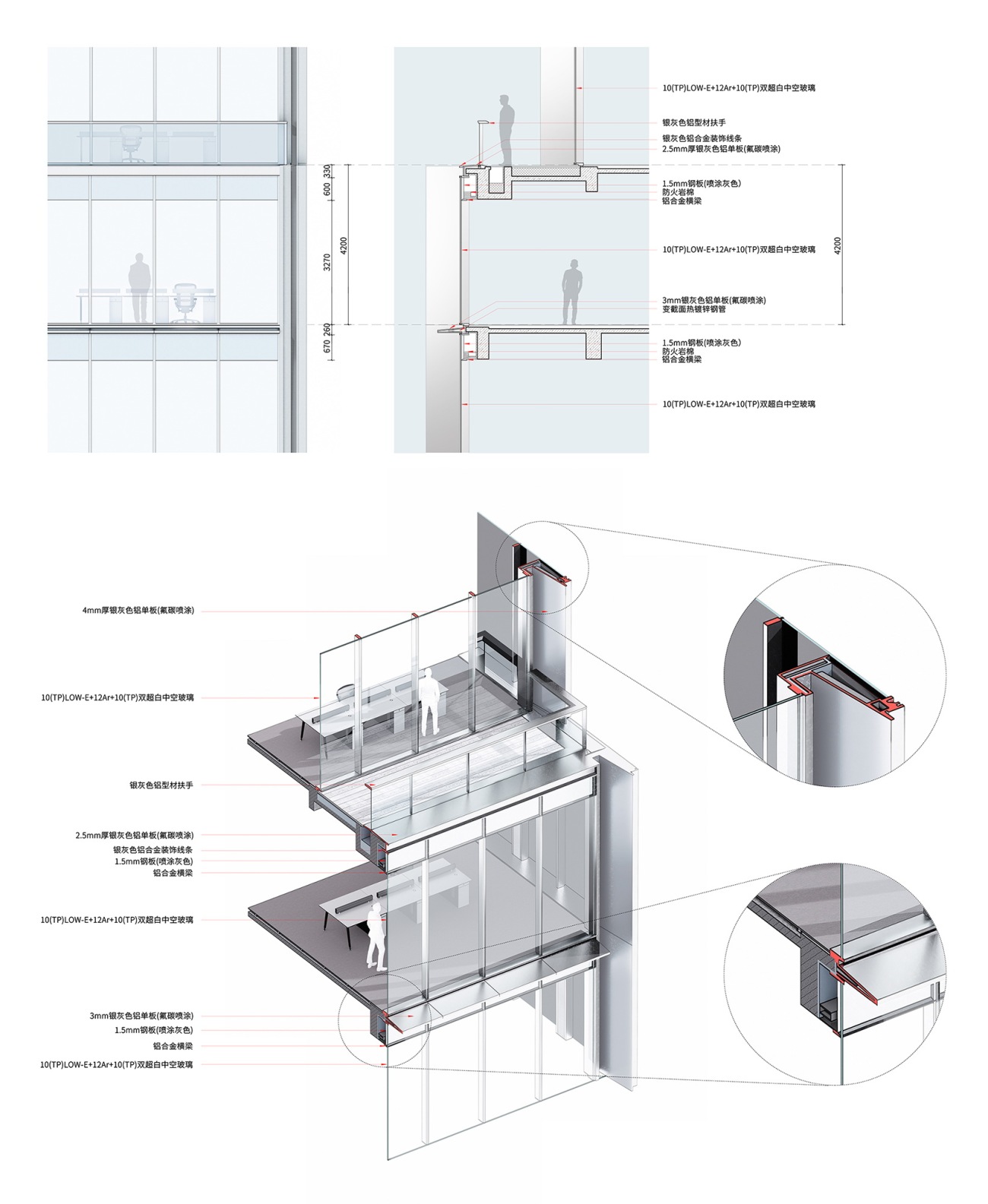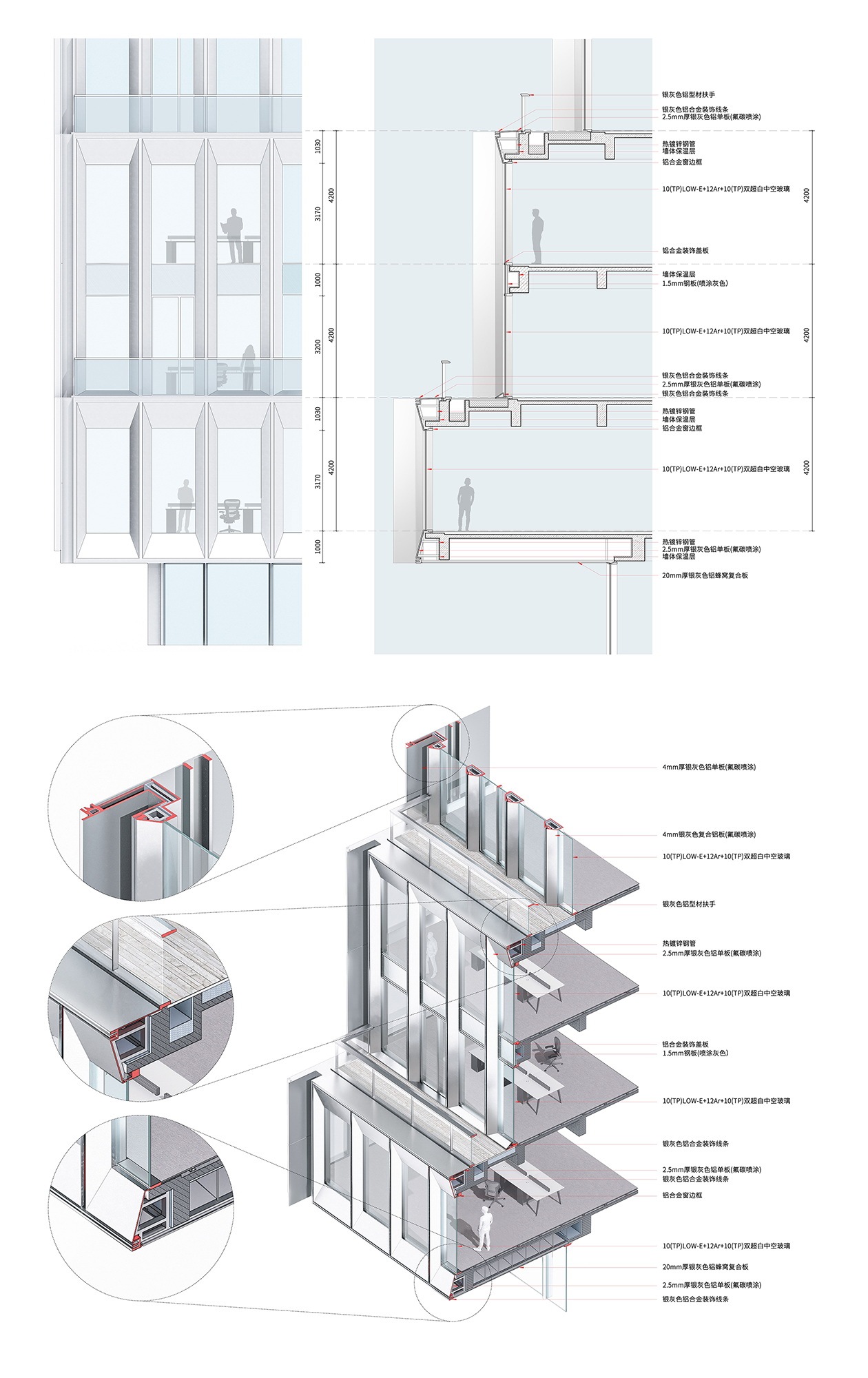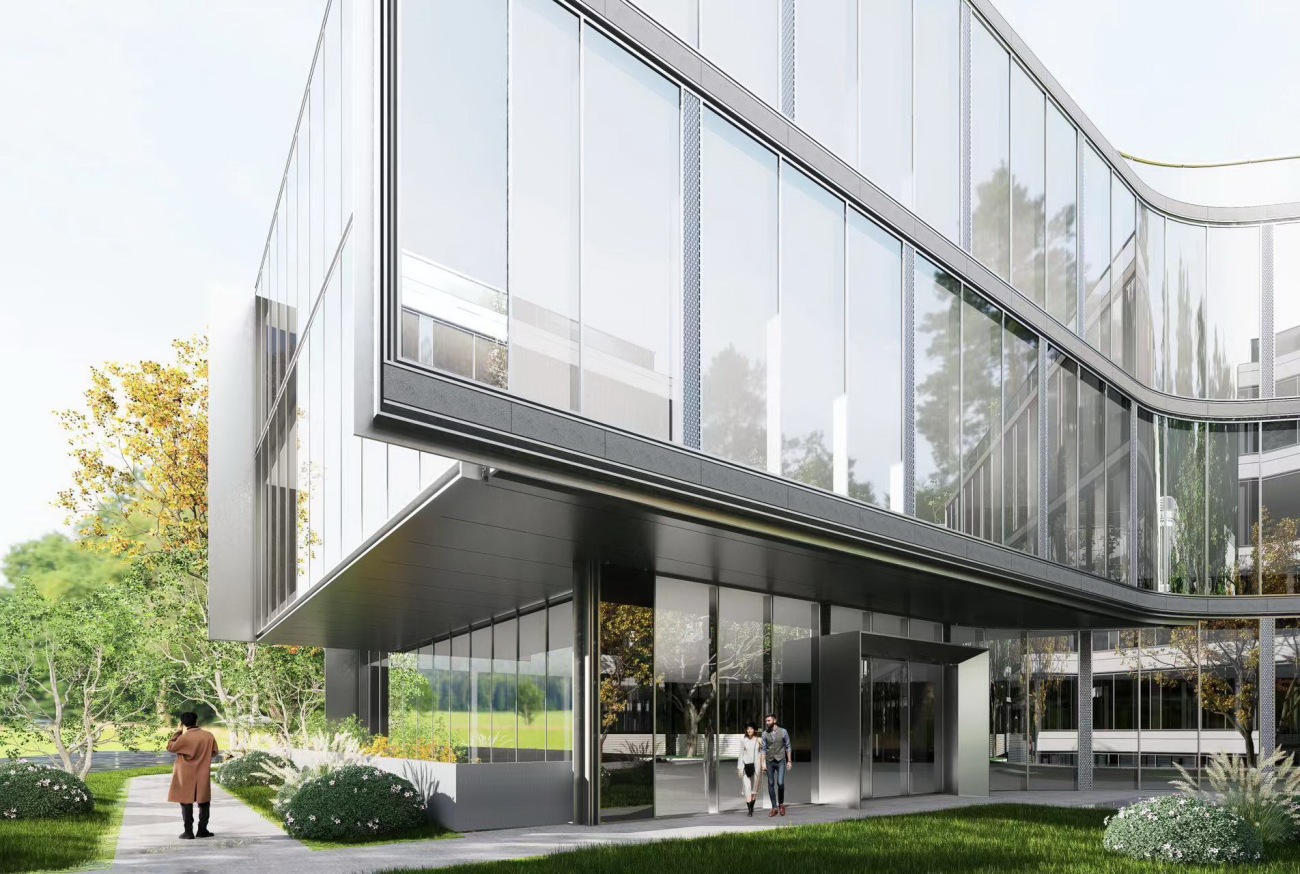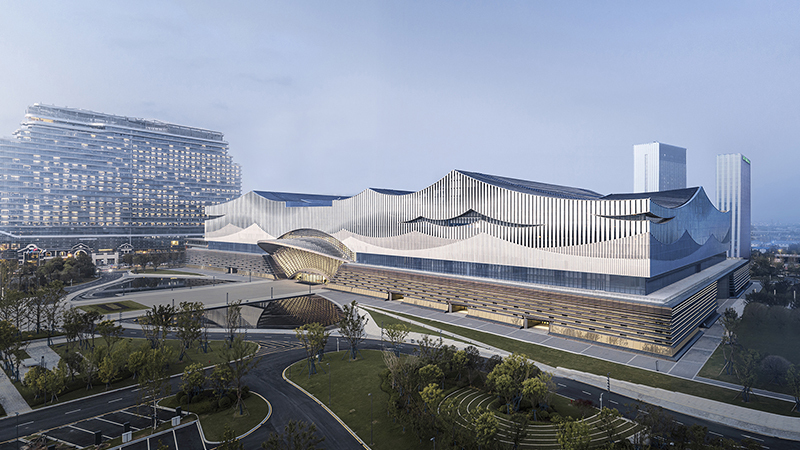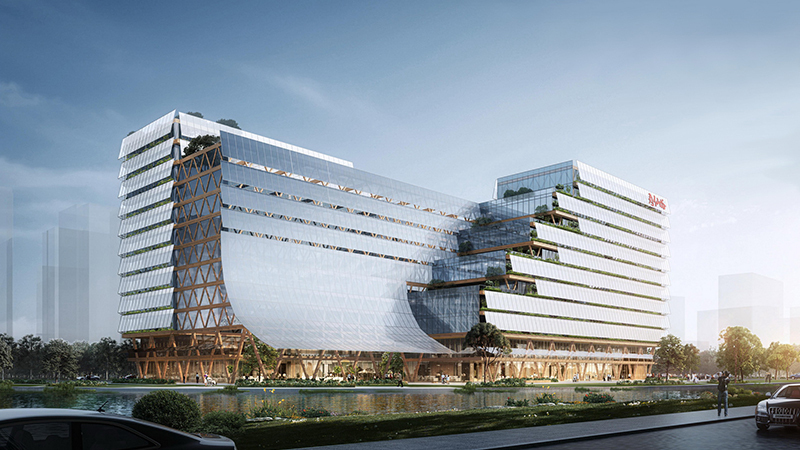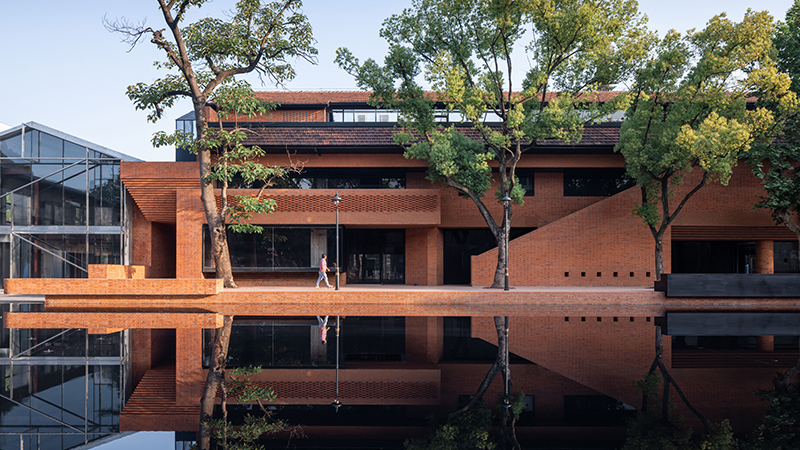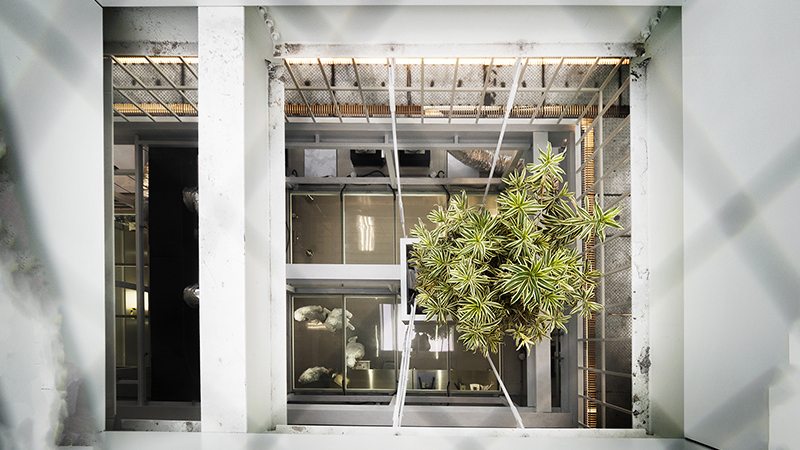| 公司: | line+建筑事务所 | 类型: | 建筑 |
|---|---|---|---|
| 地区: | 中国 | 标签: | 办公空间 |
line+联合创始人、主持建筑师孟凡浩率领团队中标西湖投资集团公开市场拿地的首个项目——凤凰谷文创总部园区建筑、室内、景观一体化设计权,并担任该项目主创及总建筑师,负责主持项目的建筑、室内、景观、幕墙及灯光等多专业的协同工作,总控由概念到实施落地的全过程。
Meng Fanhao, co-founder and chief architect of line+ studio, won the design rights for XTGroup's first project, the Phoenix Valley Cultural and Creative Headquarters Park. Meng Fanhao is the project's principal architect and lead designer, responsible for the collaborative work of architecture, interior, landscape, curtain wall, and lighting of the project, as well as managing the full process from idea to realization.
项目位于杭州城南腹地的凤凰谷单元,line+以聚落原型为思考,在自然山谷环境与城市发展格局的交织中,探索开放式混合街区的新可能。目前,项目已顺利动工。
The project is in Hangzhou's southern hinterland, namely in the Phoenix Valley. Following the settlement prototype, line+ investigates new possibilities for open and mixed-use blocks within the context of the natural mountain valley environment and urban growth patterns. The project is currently under construction.
“在杭州这片得天独厚的绿色山谷间,八座单体建筑以Y型作为原型母题,顺应地形山势,散落生长为一个有机聚落,探寻人工与自然之间新的平衡点。”
——孟凡浩
"In the lush green valley of Hangzhou, eight individual buildings take the Y-shape as their prototype theme. Adapting to the natural topography, they organically grow into a settlement, seeking a new balance between human-made and natural elements."
——Meng Fanhao
#1挑战
Challenges
杭州的迷人之处在于其城市与自然间生动的结构关系,而位于城南腹地的凤凰谷淋漓尽致地展现了杭州人文自然的城市特质。上一个时代的凤凰谷单元被视作获取资源的对象,如今仍然可以从卫星图中看到这里曾经作为采矿场的痕迹,而场地本身仿佛山脉仿佛被切削的“指尖”。
The enchanting aspect of Hangzhou lies in the dynamic relationship between its urban and natural structures, and the Phoenix Valley, located in the southern hinterland of the city, vividly showcases the distinctive characteristics of Hangzhou's nature and culture. In the previous era, the Phoenix Valley unit was seen as an object for resource extraction. Even today, traces of its past as a mining site can still be discerned from satellite images, and the surrounding mountains seem to have been preserved like "fingertips."
△ 区位分析
△ Location Analysis
△ 场地原貌
△ Existing Site
随着城市发展,凤凰谷单元逐渐由城市边缘成为城市腹地。曾经的水泥工厂被改造为艺术创意园区,中国美术学院、浙江音乐学院等艺术高校在此建立。依托区域内独特的自然景观与文化艺术资源,政府与投资公司希望在此建造以艺术和创意为主题的总部园区,吸引顶级创意艺术公司入驻。
With the development of the city, the Phoenix Valley unit has gradually transitioned from the urban periphery to the urban core. The former cement factory has been transformed into an art creative park, hosting prestigious art institutions such as the China Academy of Art and Zhejiang Conservatory of Music. Leveraging the unique natural landscape and cultural artistic resources in the region, the government and investment companies aim to construct a headquarters park themed around art and creativity, attracting top creative and artistic companies to establish their presence.
△ 区位图
△ Location
从空间的演变历史中,从”矿山-工厂”到”景观-艺术”这一“自然-城市”关系的范式转变,处在这一区位的凤凰谷,如何面对这一变化,在这一转变中建立链接自然与城市、过去与未来的纽带是首要问题。
In the evolution of spatial history, the paradigm shift from "mining-factory" to "landscape-art" signifies a transformation in the relationship between "nature" and "urban." Addressing this change and establishing a connection between nature and the city, as well as the past and the future, becomes a paramount concern.
具体到场地,设计需要在这块最大高差超过10m,空间局促的三角形用地上布置八座独立单体建筑。如何在异形用地中减少消极空间,提升土地利用率是设计中的另一大挑战。
Specifically for the site, the design needs to arrange eight independent buildings on this triangular plot with a maximum height difference exceeding 10 meters and limited space. Another major challenge in the design is how to minimize negative space and enhance land utilization in this irregularly shaped plot.
再到建筑本身,作为总部园区的内在属性要求建筑符合商业逻辑,内部空间达到高品质标准,在满足良好的采光通风、清晰的办公空间的基本条件下,需制造尽可能多的丰富多样的公共休憩空间,同时适应未来更个性化的办公趋势。
As a headquarters park, the buildings have placed extremely high demands on both commercial value representation and internal space quality. While meeting the basic conditions of good lighting, ventilation, and clear office space, there is a need to create as many diverse leisure spaces as possible. Simultaneously, the design must adapt to future trends in more personalized office environments.
#2原型
Prototype
规划用地东南边长约140米,西南边长约270米,北边长约230米,呈三角形状。
The planned land has a southeast side length of approximately 140 meters, a southwest side length of about 270 meters, and a north side length of about 230 meters, forming a triangular shape.
设计一方面希望建筑能够在一定程度上修复山体的原本形态,既是对历史记忆的回溯,也是建筑师介入自然时的态度。另一方面,出于功能实用的考量,希望建筑依然维持基本几何形态的现代建筑特征。
On one hand, we aim for the architecture to restore the original form of the mountain, serving as a retrospective of historical memory and reflecting the architect's approach to intervening in nature. On the other hand, for practical functional considerations, we hope the architecture still maintains the basic geometric characteristics of modern architecture.
基于这样的基本价值判断,经历了多轮方案比选,找到了最为契合场地的建筑形式,用枝杈状的“Y”型来填补自然中的场地。
Based on these fundamental value judgments and after multiple rounds of scheme comparisons, we finally found the architectural form that best suits the site – filling the natural landscape with a branching Y shape.
△ 概念草图
△ Concept Sketch
△ 总图布局演变
△ Overall Layout Evolution
△ 模型鸟瞰
△ Model Aerial View
不同于90°方盒子,Y型120°形体呈现出对复杂场地更好的适应性,同时条带单元相比块状单元能够更好填补三角形空间,减少场地边缘与建筑间的消极空间。
Unlike the 90° square box, the 120° form demonstrates better adaptability to complex terrain. The strip units, compared to block units, can better fill the triangular space and reduce negative spaces between the site's edges and the buildings.
△ 布局生成图
△ Layout Generation Diagram
△ “Y”型建筑原型
△ Y Shape Architectural Form
△ 模型照
△ Model Photo
依据场地与城市道路的关系,场地东北侧既是园区主要人行出入口,也是更大尺度上进入凤凰谷艺创片区的必经之路。入口处的Y型端部呈角度对峙,一方面退让出人行入口广场,另一方面结合高差创造出具有张力的入口空间形象。
Considering the relationship between the site and city roads, the northeast side of the site serves as both the main pedestrian entrance to the park and a crucial route to enter the larger-scale Phoenix Valley Art and Creativity Zone. The Y-shaped form at the entrance confronts at an angle, on one hand, making way for the pedestrian entrance plaza, and on the other hand, combining with the elevation difference to create an entrance space with tension.
设计通过扭转场地中部两座建筑,结合台地将内部公共空间打造成有收有放、连贯流动的整体,使得内部广场既有足够的尺度满足公共性需求,又具备旷奥相宜的自然趣味。
The design involves rotating two buildings in the central part of the site and utilizing the terrain to create a coherent and flowing internal public space. This ensures that the internal square meets both the public needs with sufficient scale and provides a naturally appealing and spacious environment.
带状的公共空间贯穿场地,连接东、西两侧人行出入口,化解不同标高台地的高差,同时向各个方向发散,串接8幢单体建筑。
A strip of public space runs through the site, connecting the east and west pedestrian entrances, resolving the elevation differences between different terraced levels. It extends in various directions, interconnecting the eight standalone buildings.
北侧与东南侧五栋建筑均为五层,西南侧三栋自北向南分别为一栋四层和两栋三层建筑,符合自然形态原本北高南低的态势,同时符合北高南低的日照条件。
On the north side and southeast side, there are five five-story buildings each. On the southwest side, there are three buildings: one four-story building from north to south, followed by two three-story buildings. This overall layout conforms to the natural form of higher elevation in the north and lower in the south, aligning with the sunlight conditions of higher elevation in the north.
△ 地形高差分析
△ Terrain Elevation Analysis
地处峡谷中,各个方向景观资源俱佳。因此建筑尽可能的朝不同方向层层叠退,保证每层均具备室外露台,提供良好的户外休憩场所。屋顶花园设计考虑到设备的影响,通过片墙限定活动空间与设备放置区域,提高屋顶空间的利用率,同时兼顾建筑的第五立面。
Located in the canyon, the site boasts excellent views in various directions. Therefore, the buildings step back as much as possible in different directions, ensuring that each level has an outdoor terrace to provide good outdoor recreational spaces. The rooftop garden design takes equipment into consideration, using partition walls to define activity spaces and equipment placement areas, increasing the utilization of rooftop space, and simultaneously considering the building's fifth facade.
△ 单体生成分析
△ Individual Building Generation Diagram
在室内设计中,Y型分解为一系列方整空间的组合。首先通过核心筒的合理布局,消化因形体转折产生的消极空间,使内部空间完整、连贯,充满丰富性与流动感,并根据企业气质与品牌调性打造与之相匹的办公环境和个性化展示空间。
In the interior design, we break down the Y-shape into a series of square spaces. First, through the rational layout of the core, we eliminate negative spaces generated by the form's turns, making the internal space completed, coherent, and full of richness and fluidity. We tailor the office environment and personalized display space to match the corporate temperament and brand tone.
#3 立面
Facade
立面语言延续城市与自然的共生关系,通过更加简洁现代的形式语言来调和有机的建筑形体,以实现城市与自然的平衡。这也意味着入驻企业可以同时拥有属于自然的野趣以及属于城市生活的精致感。
The façade language extends the symbiotic relationship between the city and nature, harmonizing organic architectural forms through a more concise and modern formal language to achieve a balance between urban and natural elements. This also implies that the occupying enterprises can simultaneously enjoy the wild charm of nature and the refined lifestyle of the city.
建筑立面遵从形体设计的逻辑,通过两种语言区分Y型侧面与端部。侧面通过连续的水平线条强调Y型自然延伸的形态。端部则最大化玻璃面积,强调其充沛的景观视野。
The architectural façade follows the logic of the form design, distinguishing between the lateral and end sections of the Y-shape through two design languages. The lateral side emphasizes the natural extension of the Y-shape through continuous horizontal lines. The end sections maximize glass areas to emphasize the abundant panoramic views.
△ 墙身节点大样
△ Wall Section Details
△ 墙身节点大样
△ Wall Section Detail
△ 立面细部
△ Facade Details
#4 结语
Conclusion
关于城市与自然如何相处,杭州这座城市已经做出了无数精彩的解答,在凤凰山谷中,line+以聚落原型为思考,畅想办公场景与自然场景的积极互动。正如工厂和山脉的切痕宣告着上个时代的认知,枝杈状新生的建筑将开启未来崭新的篇章。
About how the city and nature coexist, Hangzhou has provided numerous wonderful answers. In the Phoenix Valley, line+ takes the settlement prototype as its consideration, envisioning a positive interaction between office and natural scenes. Just as the scars of factories and mountains declare the cognition of the past era, the new branch-like buildings will open a fresh chapter for the future.
项目名称:杭州西投 · 凤凰谷文创总部园区
建筑、室内、景观设计单位:line+建筑事务所
主持建筑师/项目主创:孟凡浩
设计团队(实施阶段):李昕光、袁栋、陈观兴、张文轩、郑经纬、林郁、宋成成(建筑);李上阳、饶非儿、金剑波、罗晓霞、张文杰、吴超尘(景观);金煜庭、范笑笑、徐以唱、金凯迪、何之怡、杨莉(室内)
设计团队(竞赛阶段):陈观兴、朱骁靖、李昕光、韩语嫣、黄烨、林郁、郝军、涂单、施宇航、杨雪剑
项目位置:浙江,杭州
建筑面积:58679 平方米
设计周期:2022/10-2023/11
建设周期:2023/12-至今
业主:杭州西投云创置业有限公司
施工图合作单位:浙江东设建筑设计有限公司
结构:框架结构
材料:石材、铝板、玻璃
Project Name: Hangzhou Phoenix Valley Cultural and Creative Park
Architectural, Interior, Landscape Design Firm: line+ studio
Chief Architect/ Project Principal: Meng Fanhao
Design Team (Implementation Phase): Li Xinguang, Yuan Dong, Chen Guanxing, Zhang Wenxuan, Zheng Jingwei, Lin Yu, Song Chengcheng (Architecture); Li Shangyang, Rao Feier, Jin Jianbo, Luo Xiaoxia, Zhang Wenjie, Wu Chaochen (Landscape); Jin Yuting, Fan Xiaoxiao, Xu Yichang, Jin Kaidi, He Zhiyi, Yang Li (Interior)
Design Team (Competition Phase): Chen Guanxing, Zhu Xiaojing, Li Xinguang, Han Yuyan, Huang Ye, Lin Yu, Hao Jun, Tu Dan, Shi Yuhang, Yang Xuejian
Project Location: Hangzhou, Zhejiang
Building Area: 58,679 square meters
Design Period: October 2022 - November 2023
Construction Period: December 2023 - Ongoing
Client: Hangzhou Xitou Yunchuang Property Co., Ltd.
Construction Drawings: DSA Group
Structure: Frame Structure
Materials: Stone, Aluminum Panel, Glass
更新日期:2024-02-29 16:33:46
非常感谢 line+建筑事务所 带来的精彩项目, 查阅更多Appreciations towards line+ Architects for sharing wonderful work on hhlloo. Click to see more works!
